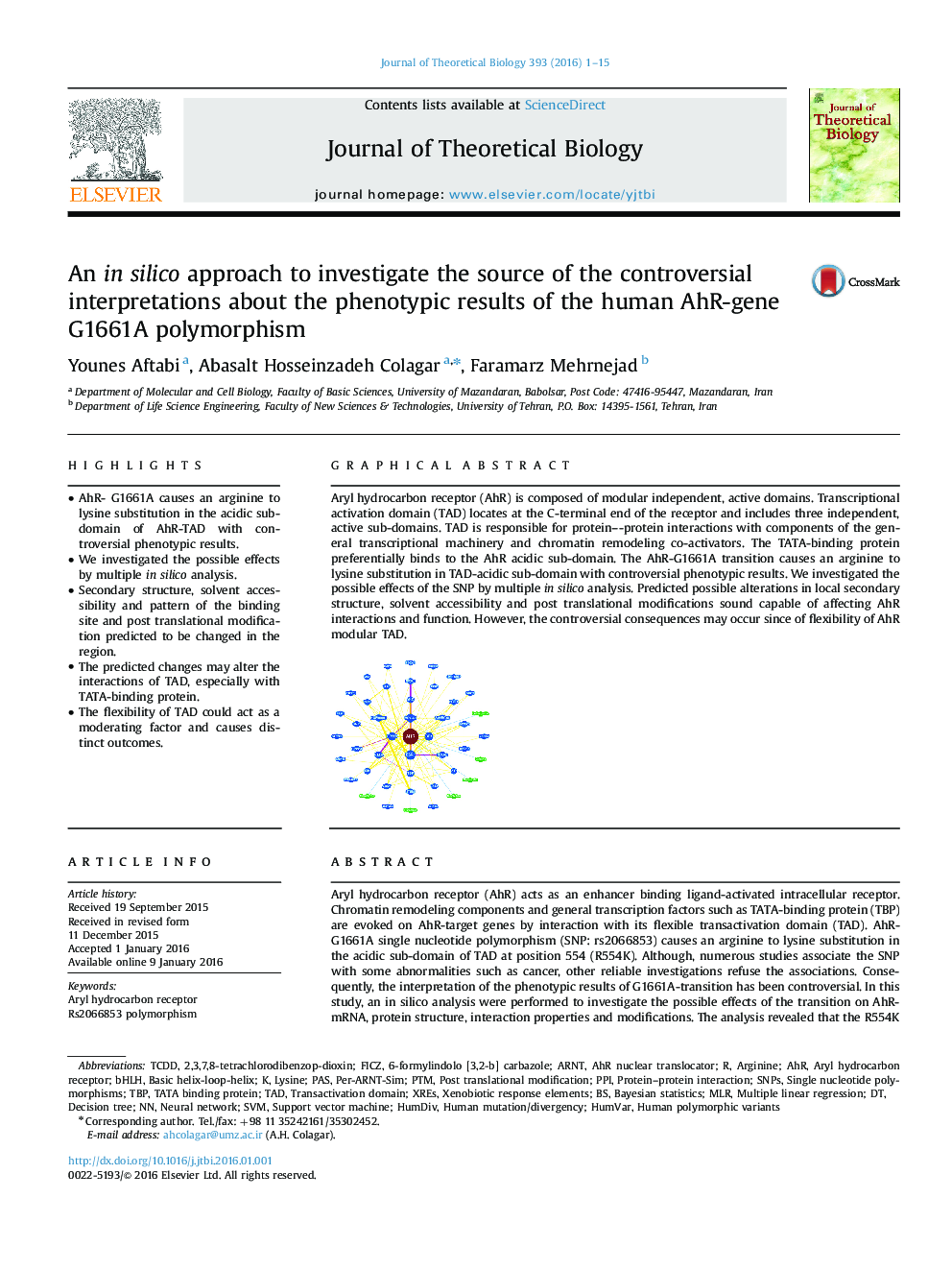| کد مقاله | کد نشریه | سال انتشار | مقاله انگلیسی | نسخه تمام متن |
|---|---|---|---|---|
| 4495858 | 1623817 | 2016 | 15 صفحه PDF | دانلود رایگان |

• AhR- G1661A causes an arginine to lysine substitution in the acidic sub-domain of AhR-TAD with controversial phenotypic results.
• We investigated the possible effects by multiple in silico analysis.
• Secondary structure, solvent accessibility and pattern of the binding site and post translational modification predicted to be changed in the region.
• The predicted changes may alter the interactions of TAD, especially with TATA-binding protein.
• The flexibility of TAD could act as a moderating factor and causes distinct outcomes.
Aryl hydrocarbon receptor (AhR) acts as an enhancer binding ligand-activated intracellular receptor. Chromatin remodeling components and general transcription factors such as TATA-binding protein (TBP) are evoked on AhR-target genes by interaction with its flexible transactivation domain (TAD). AhR-G1661A single nucleotide polymorphism (SNP: rs2066853) causes an arginine to lysine substitution in the acidic sub-domain of TAD at position 554 (R554K). Although, numerous studies associate the SNP with some abnormalities such as cancer, other reliable investigations refuse the associations. Consequently, the interpretation of the phenotypic results of G1661A-transition has been controversial. In this study, an in silico analysis were performed to investigate the possible effects of the transition on AhR-mRNA, protein structure, interaction properties and modifications. The analysis revealed that the R554K substitution affects secondary structure and solvent accessibility of adjacent residues. Also, it causes to decreasing of the AhR stability; altering the hydropathy features of the local sequence and changing the pattern of the residues at the binding site of the TAD-acidic sub-domain. Generating of new sites for ubiquitination and acetylation for AhR-K554 variant respectively at positions 544 and 560 was predicted. Our findings intensify the idea that the AhR-G1661A transition may affects AhR-TAD interactions, especially with the TBP, which influence AhR-target genes expression. However, the previously reported flexibility of the modular TAD could act as an intervening factor, moderate the SNP effects and causes distinct outcomes in different individuals and tissues.
Aryl hydrocarbon receptor (AhR) is composed of modular independent, active domains. Transcriptional activation domain (TAD) locates at the C-terminal end of the receptor and includes three independent, active sub-domains. TAD is responsible for protein–-protein interactions with components of the general transcriptional machinery and chromatin remodeling co-activators. The TATA-binding protein preferentially binds to the AhR acidic sub-domain. The AhR-G1661A transition causes an arginine to lysine substitution in TAD-acidic sub-domain with controversial phenotypic results. We investigated the possible effects of the SNP by multiple in silico analysis. Predicted possible alterations in local secondary structure, solvent accessibility and post translational modifications sound capable of affecting AhR interactions and function. However, the controversial consequences may occur since of flexibility of AhR modular TAD.Figure optionsDownload as PowerPoint slide
Journal: Journal of Theoretical Biology - Volume 393, 21 March 2016, Pages 1–15